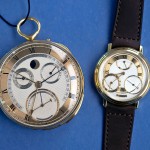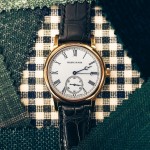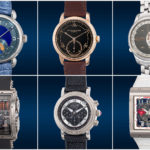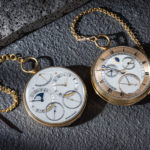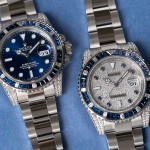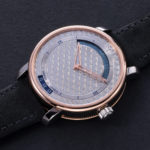Highlights: Independent Watchmaking at Phillips Geneva
Dufour, Frodsham, Journe and more.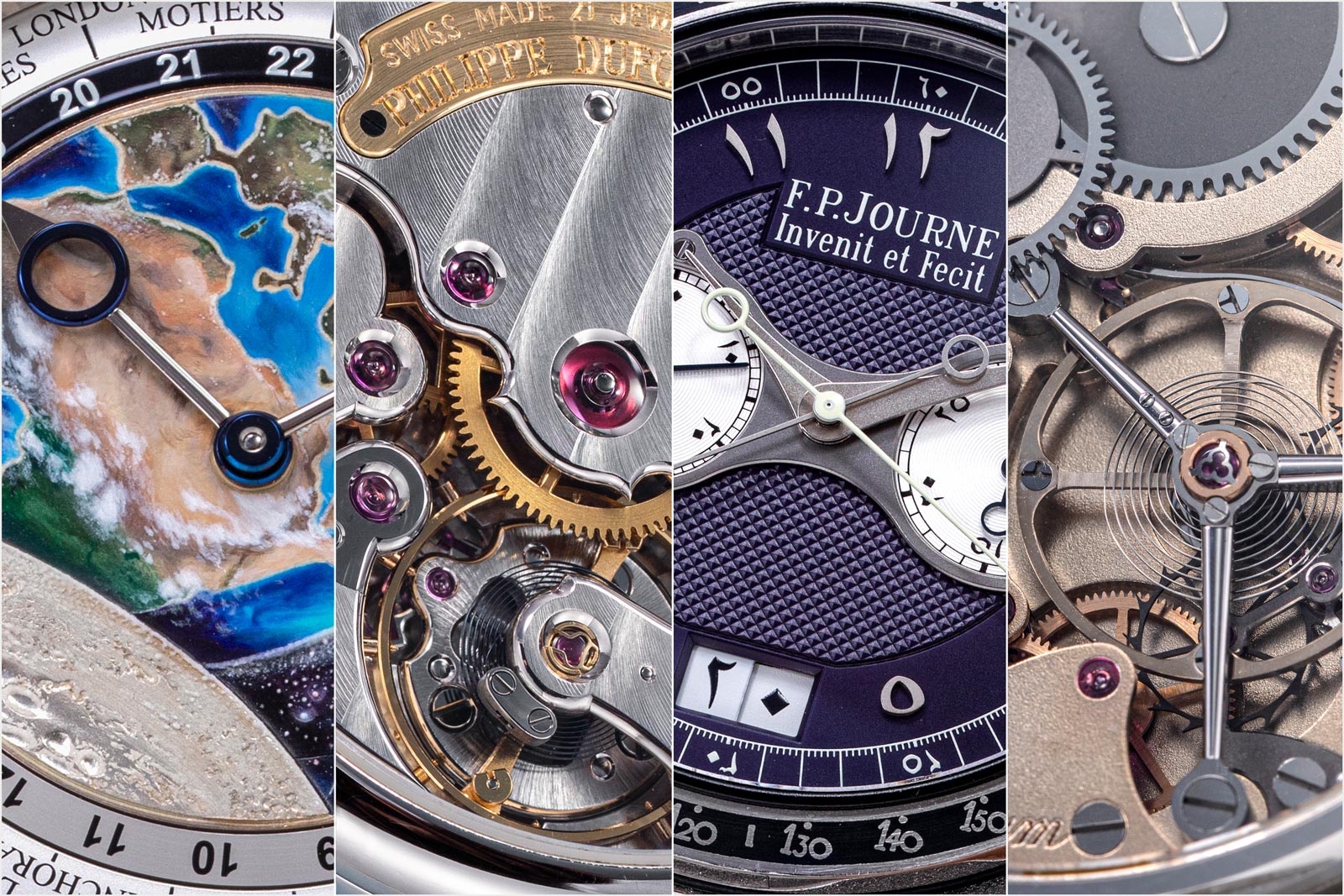
With the current popularity of independent watchmaking, the proportion of auction catalogues dedicated to the genre has grown. At the same time, the obvious slowdown in the market means prices have moderated. The result is a more diverse offering of independent watchmaking, and at lower prices than 18 months ago.
The upcoming Phillips’ Geneva auction illustrates this. We take a look at some of the notable examples of independent watchmaking, including a Middle East edition from F.P. Journe, a glow-in-the-dark Voutilainen World Timer, and a trio of time-only watches that are all interesting yet entirely different from Philippe Dufour, Paul Gerber, and Charles Frodsham.
The Geneva Watch Auction: XIX takes place over two days on May 11 and 12 the Hotel President in downtown Geneva (a change from the traditional venue of La Reserve). The full catalogue is available on Phillips.com.
62 – F.P. Journe lineSport Chronograph Rattrapante Eastern-Arabic numerals
Notably good value in titanium, the lineSport Chronograph Rattrapante is less affordable in platinum but certainly more special, and much more substantial. While the titanium and gold versions are relatively conventional in terms of aesthetics, the platinum version is unusual with its purple dial that works surprisingly well.
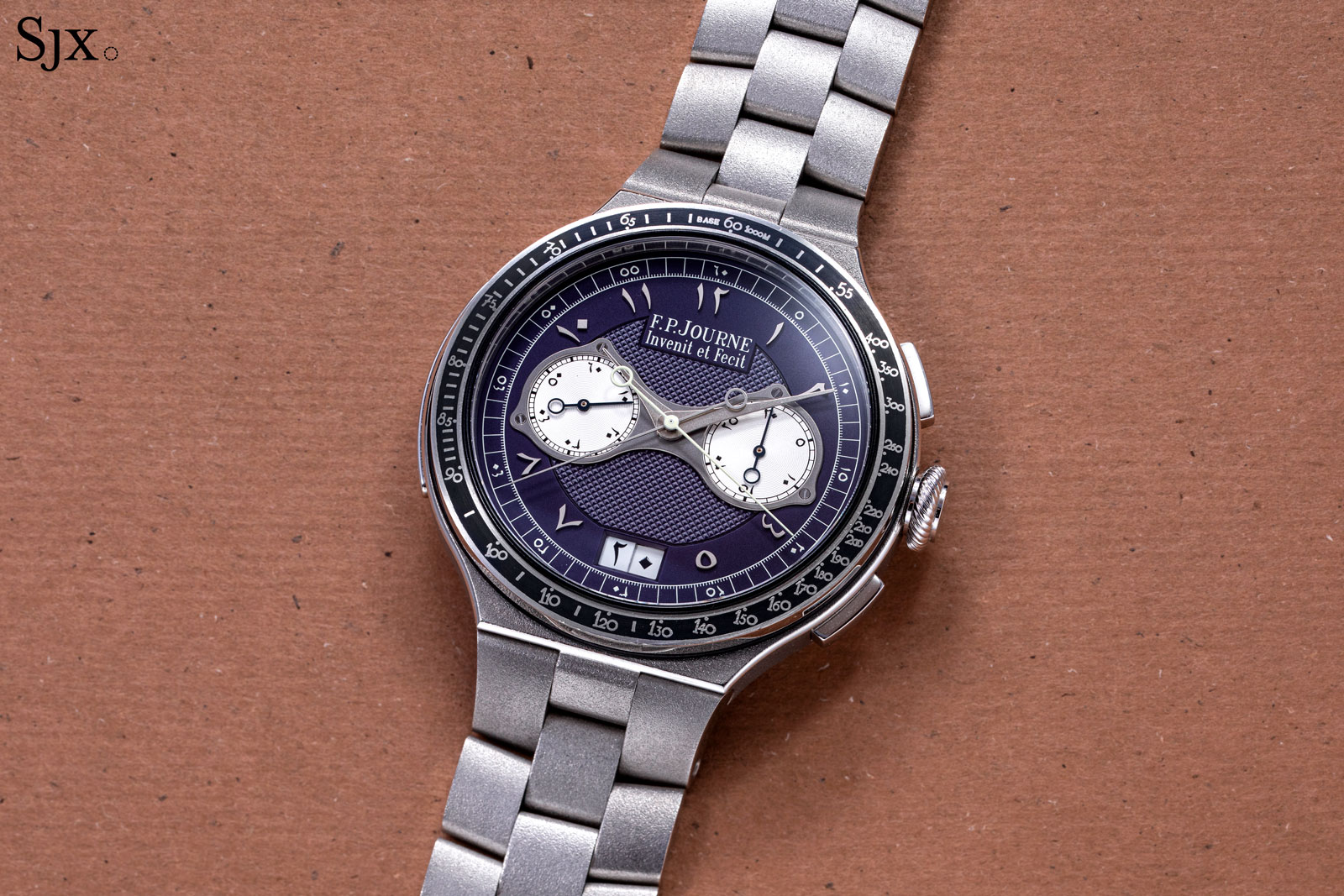
Like most F.P. Journe movements, the calibre inside is slim, a feat considering the additional height required for the rattrapante mechanism. The split-seconds is done in the traditional manner with a pair of calipers to brake the split-seconds wheel.
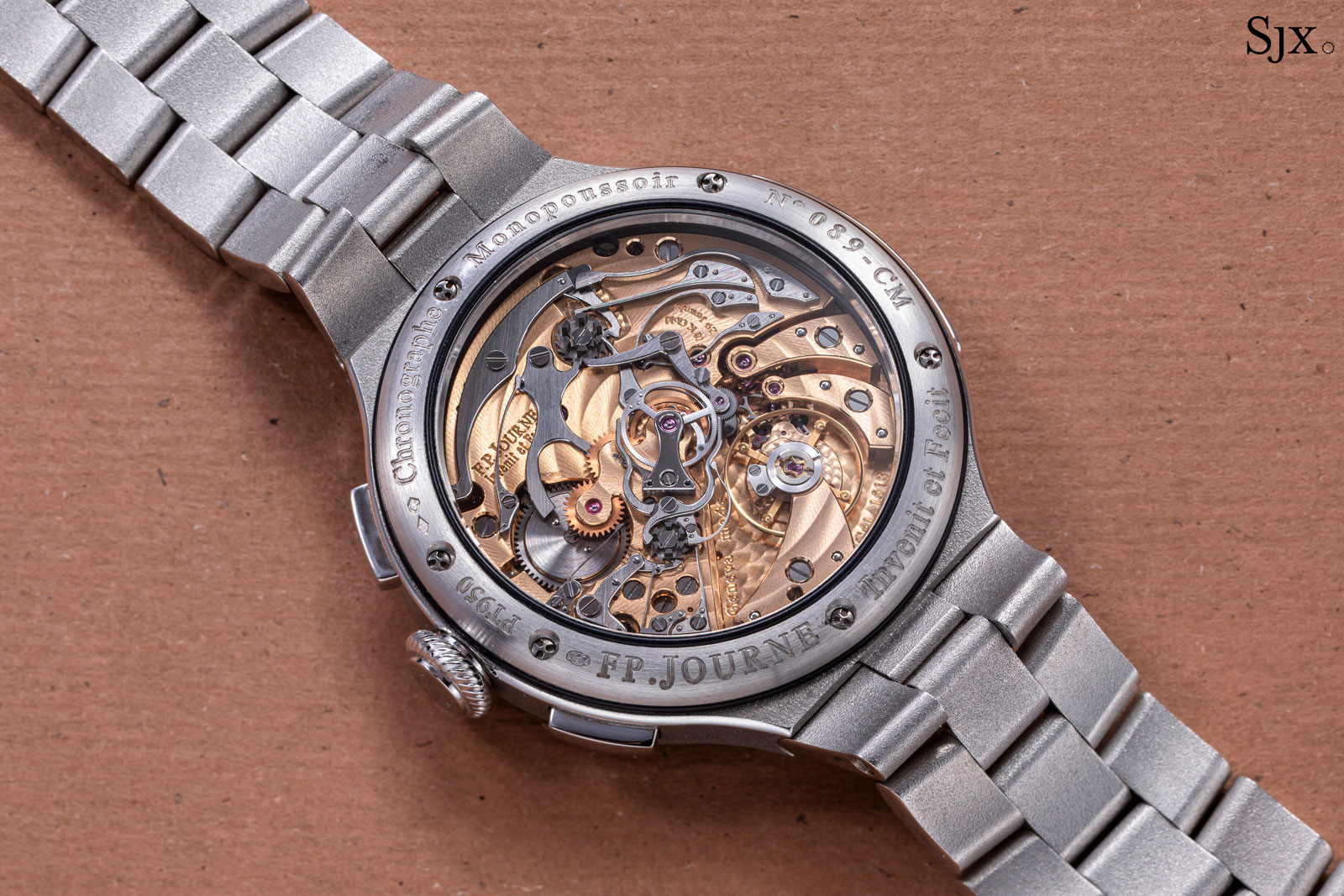
The split-seconds movement has 18k red gold bridges and plates
This example is extra special with the Eastern-Arabic numerals on the dial and even the date, though the tachymeter on the bezel remains standard, likely because it is ceramic and more difficult to redo.
A counterpoint to this Eastern-Arabic dial is the unique piece with Chinese oracle bone script numerals that was made six years ago for Prince Albert of Monaco’s charity.
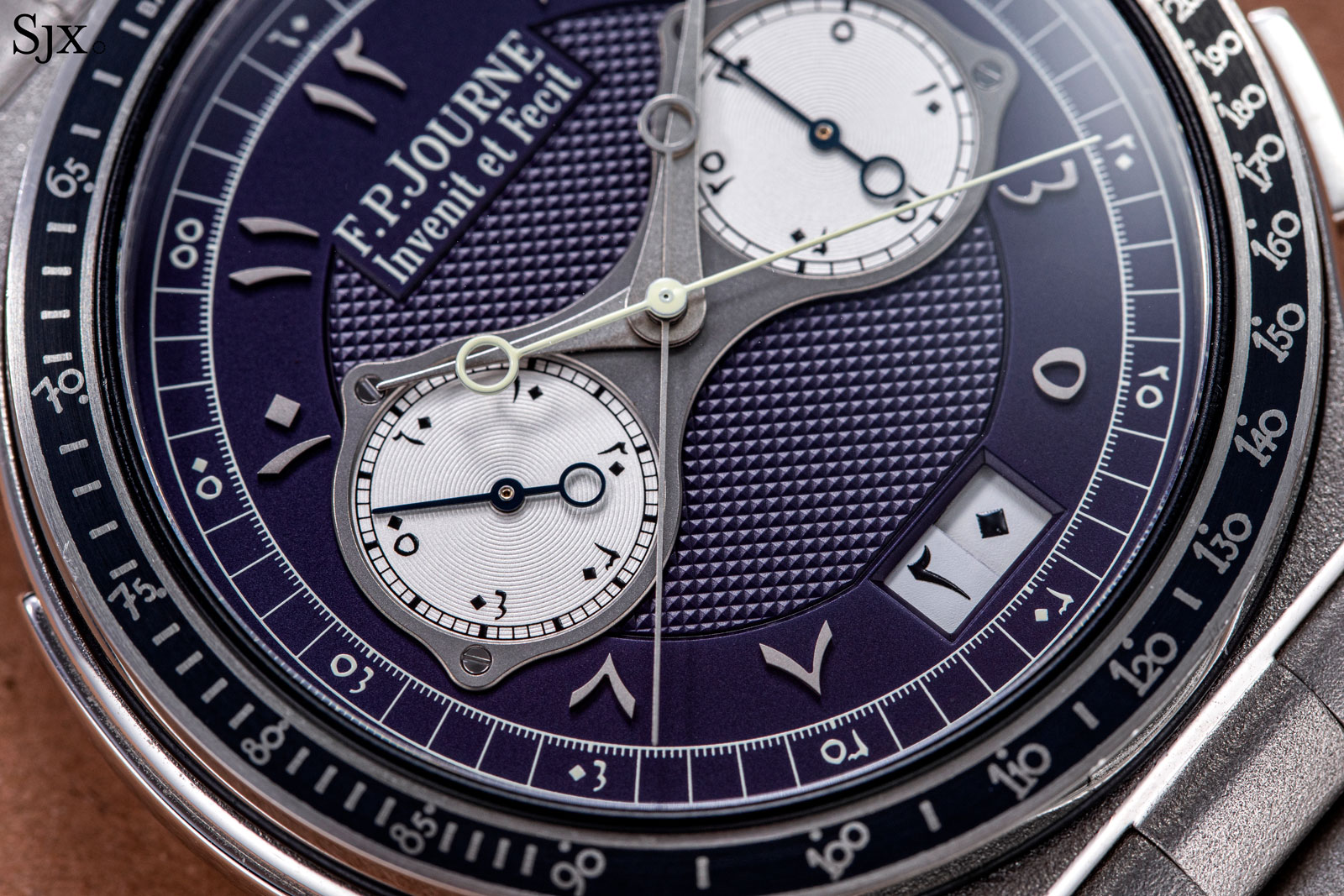
A limited edition of five with this dial, give or take, this is also a second-generation example of the lineSport that does away with the much-maligned rubber inserts on the case and bracelet for a more seamless and refined look.
Accompanied with its box and papers, the lineSport split-seconds has an estimate of CHF150,000-300,000.
63 – Philippe Dufour Simplicity, platinum, 34 mm*
Exactly identical to the Simplicity prototype no. 000 worn by Philippe Dufour himself, this is a Simplicity 34 mm in platinum with a guilloche dial. The case material also marks it out as rare; there are likely twice as many white gold examples as there are platinum.
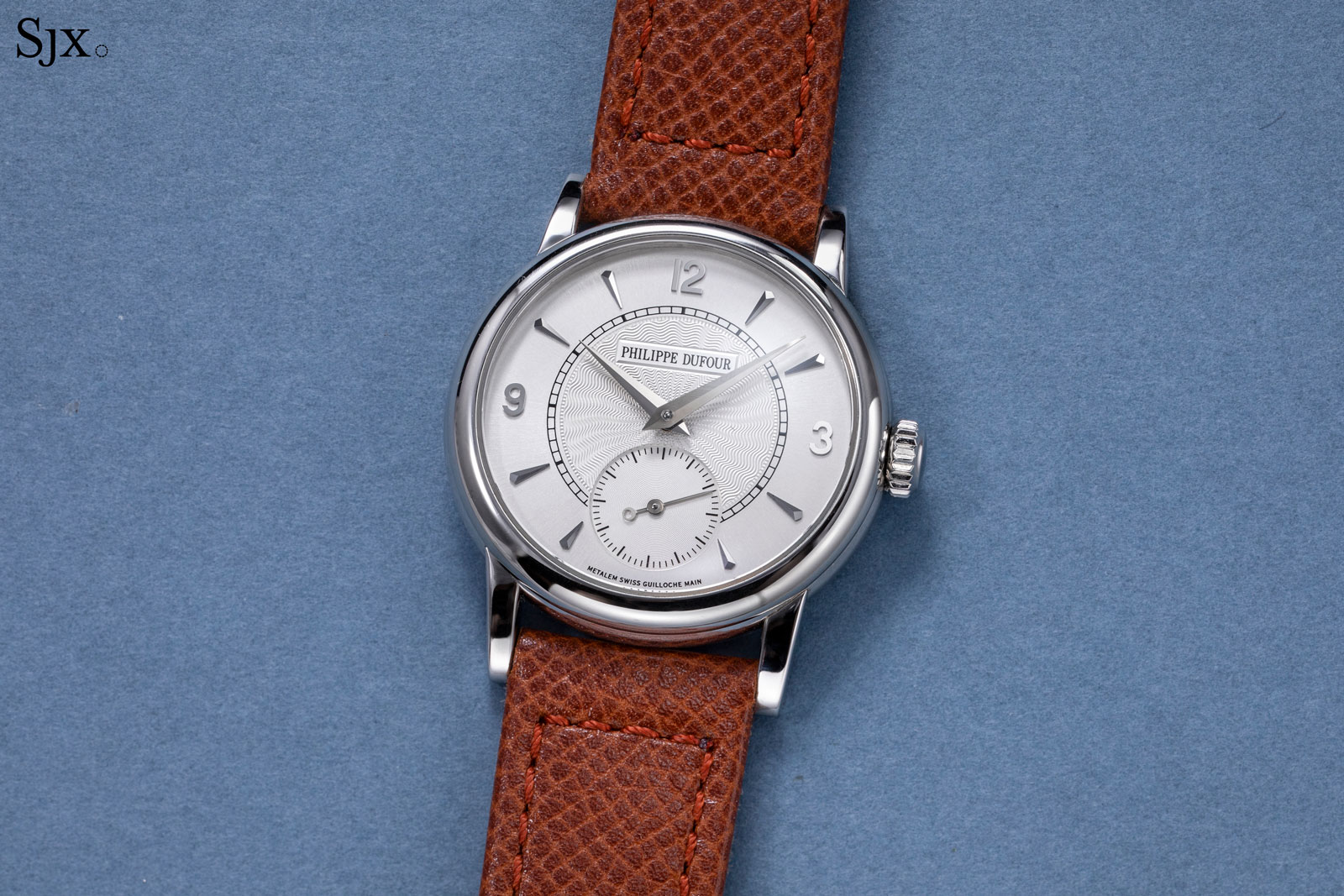
The pivot towards a more commercial approach has admittedly changed enthusiasts’ perception of the Philippe Dufour brand, but the man’s original work remains magnificent. Philippe Dufour is Philippe Dufour for a reason, and that’s the movement.
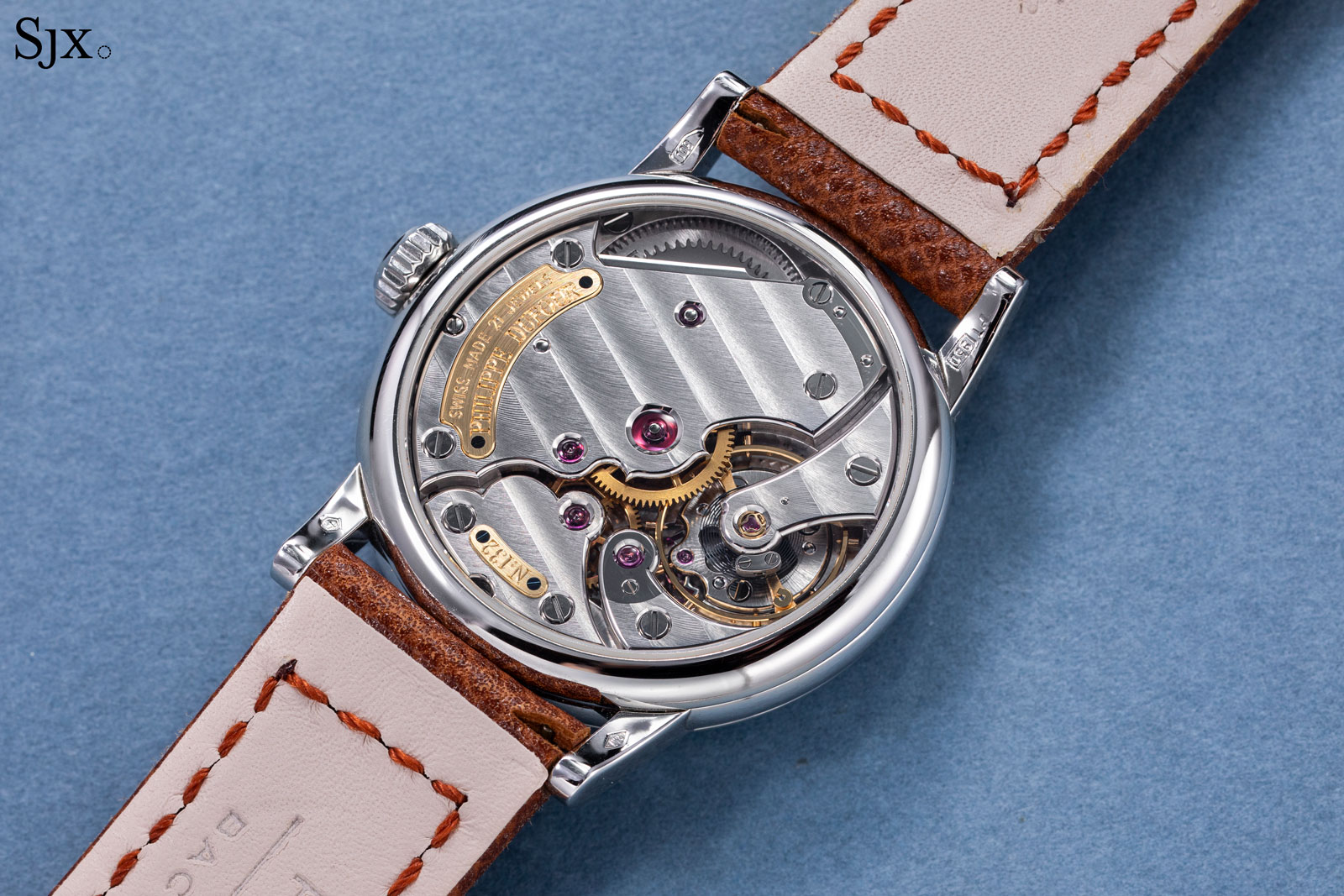
Just like its bigger brother the grande sonnerie, the Simplicity is modelled on high-end movements produced in the Vallee de Joux, the cradle of Swiss movement making and Mr Dufour’s birthplace. Evocative of calibres made by LeCoultre and Valjoux, the Simplicity movement has a vintage-inspired design, but incorporates the aesthetic flourishes and high-end finishing that are Mr Dufour’s signature.
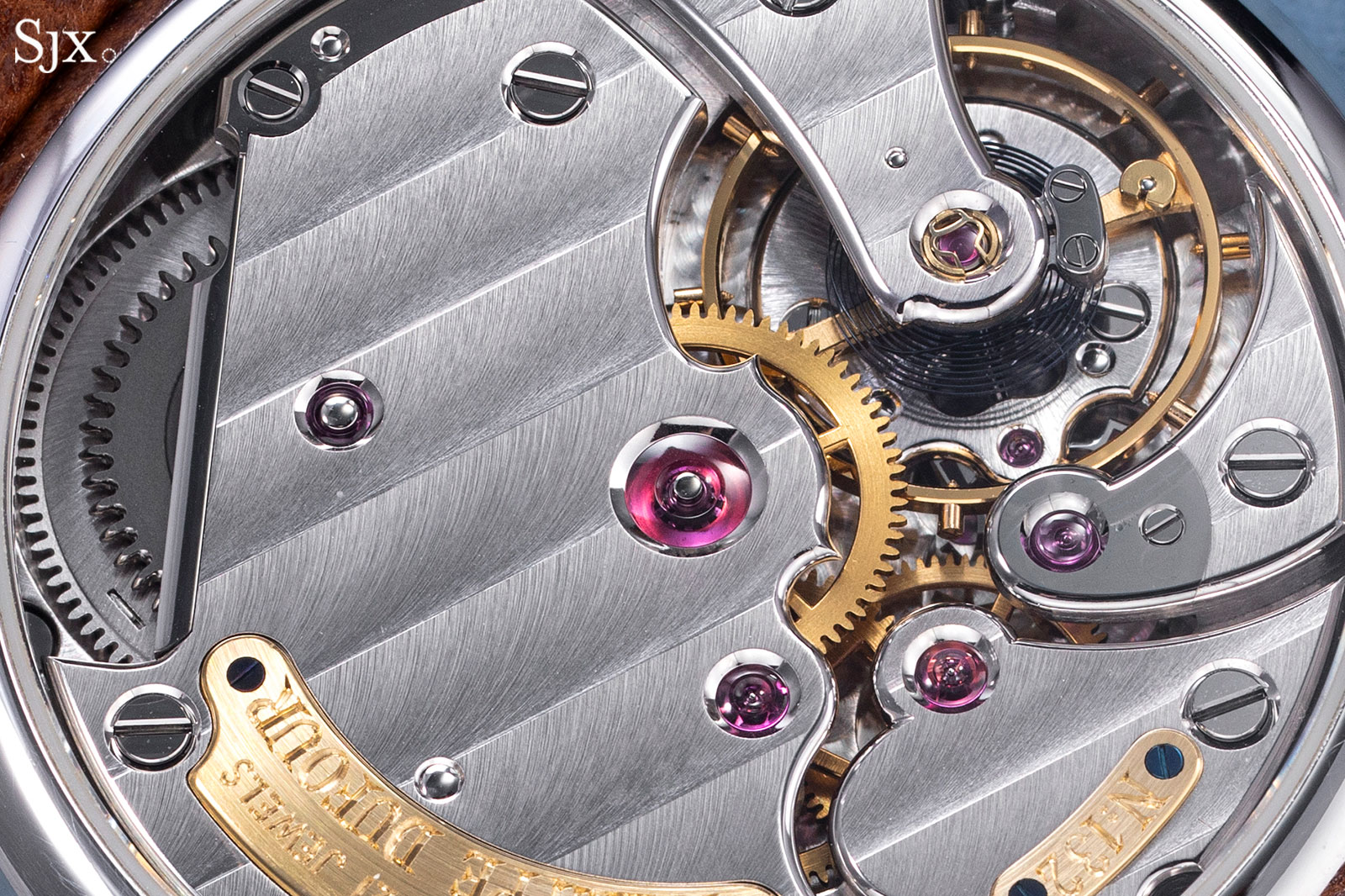
Amongst the noteworthy details are the twin sharp points on the barrel bridge on either side of the centre wheel jewel, and also the black-polished cap for the escape wheel jewel. Another is the bar-shaped winding click in black polished steel that is seamlessly integrated into the barrel bridge.
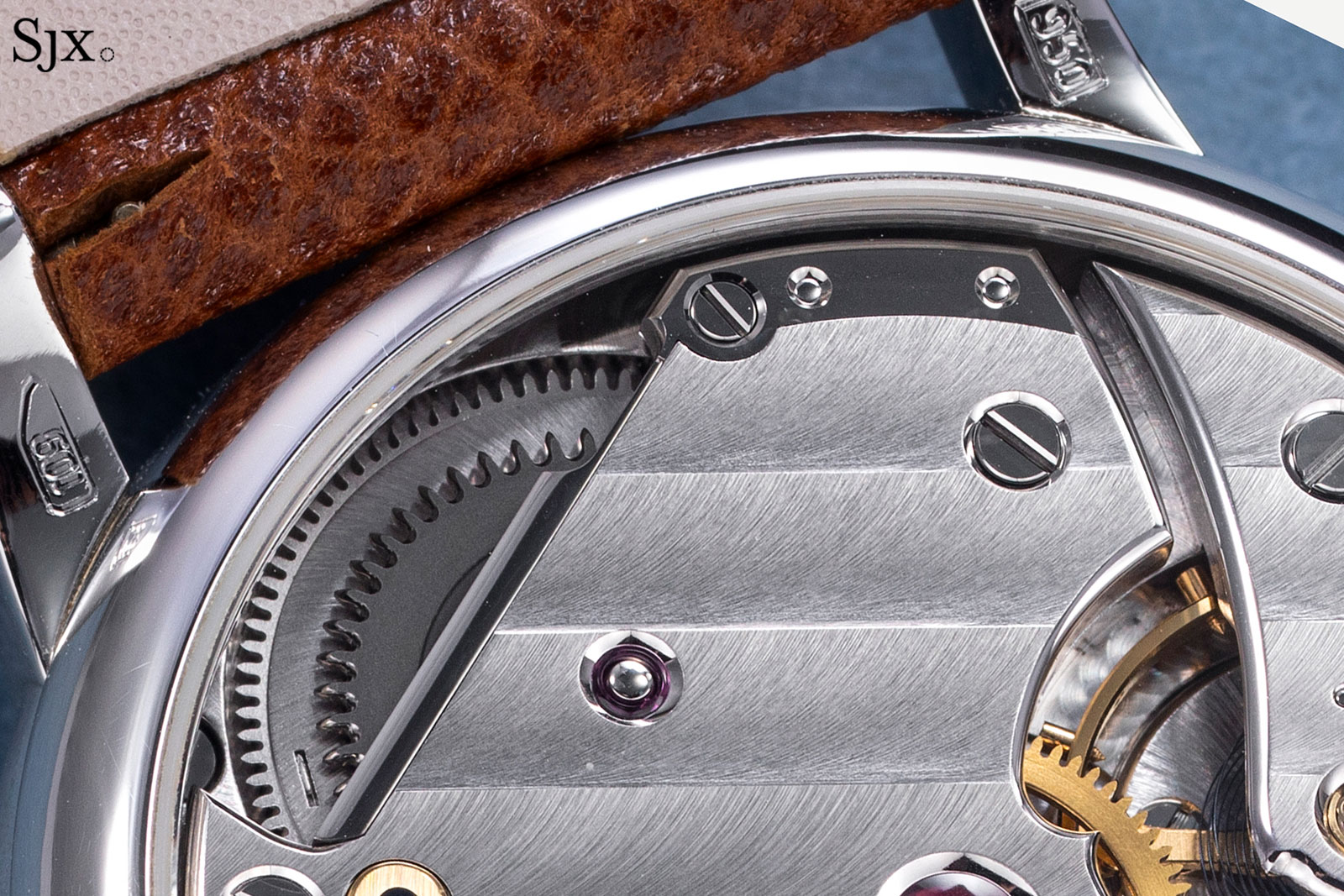
This particular watch was originally delivered in 2011, making it one of the last of the original series of 200 that was completed in 2013.
Presented with its original box and certificate, the Simplicity in platinum has an estimate of CHF250,000-500,000.
77 – Paul Gerber & Anny Weber Waterford 2023
Created for an independent watchmaking exhibition in the Irish city of Waterford last year, the Waterford 2023 was a collaboration between veteran independent watchmaker Paul Gerber, now in his mid-70s, and young watchmaking student Anny Weber.
Best known for his quirky inventions like the double and triple rotor, Mr Gerber also played a key part in what was then the most complicated wristwatch in the world, that was originally made by Franck Muller and then elaborated upon by Mr Gerber.
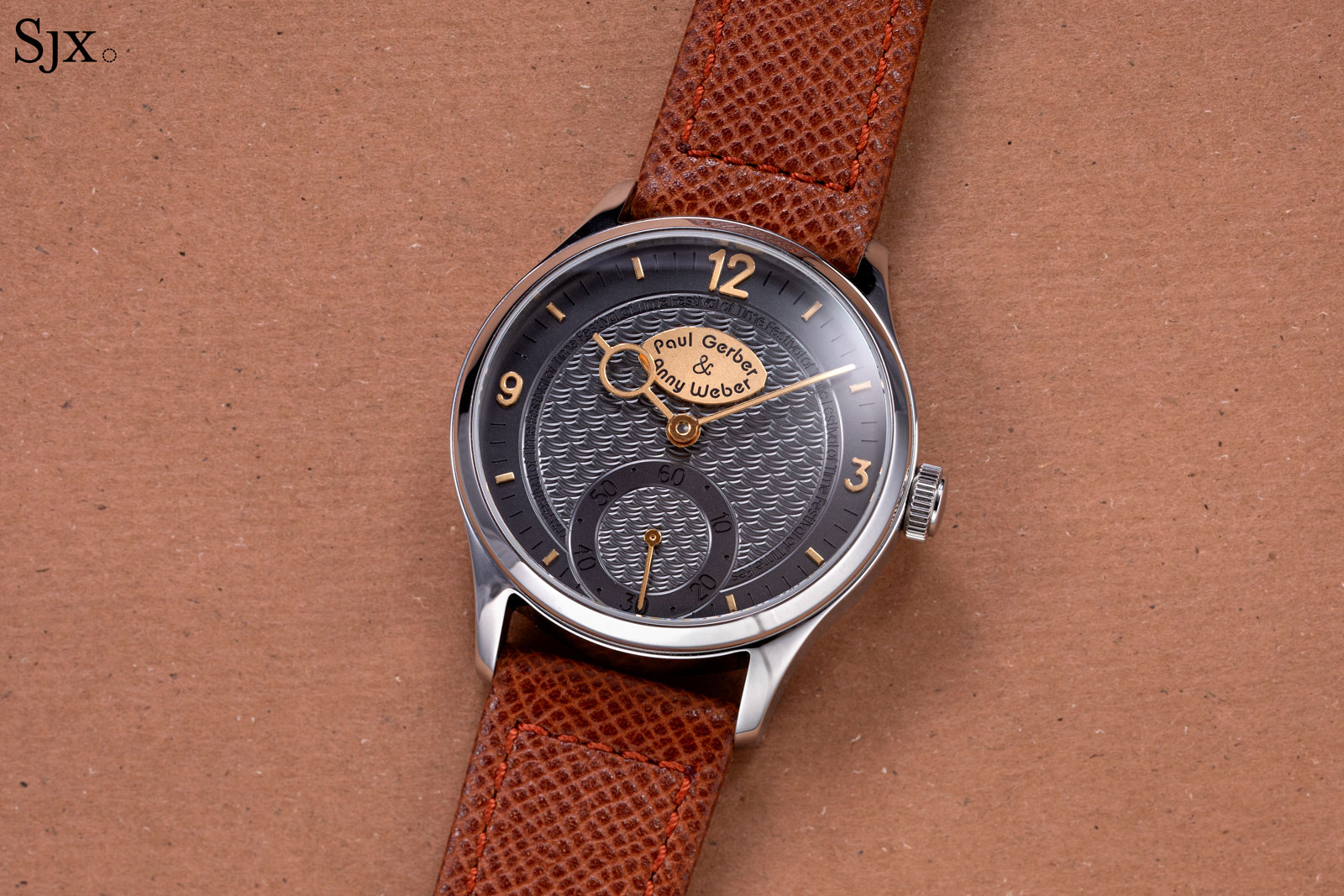
Starting with a humble ETA Unitas as the base, Mr Gerber reworked it with an enormous balance wheel running a surprisingly slow 14,400 beats per hour, or 2 Hz, half the rate of a conventional modern movement.
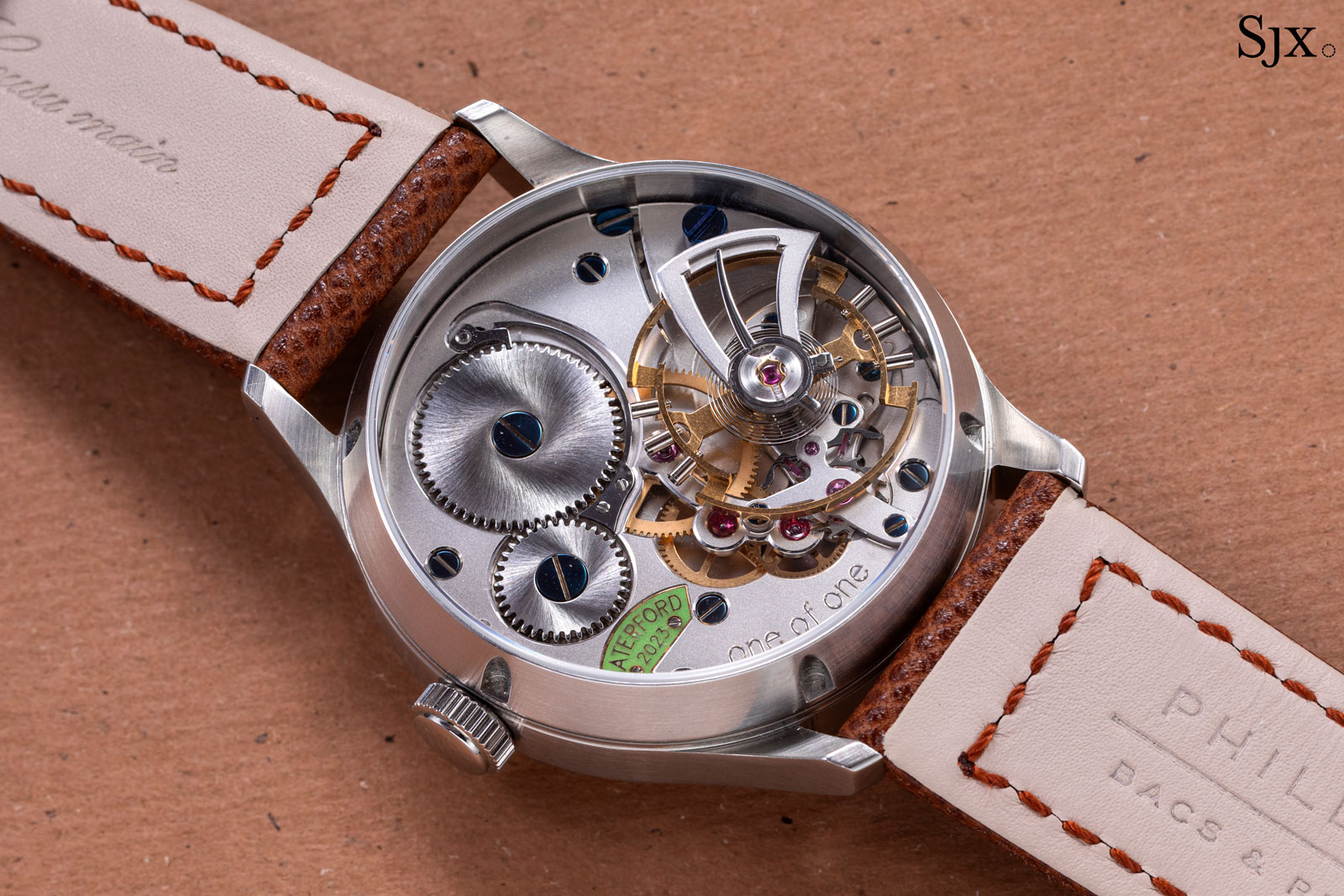
Fitted with six tall regulating screws, the balance is so large it has to sit one level above the movement – resulting in an extremely thick case that is probably 15 mm or more. Another key feature of the movement is the moustache anchor in the escapement, a detail inspired by vintage pocket watches.
The movement is technically interesting and it also has character. As a one-off creation with numerous hand-made parts, the Waterford feels a little like a prototype with minor rough edges visible on certain parts, but that adds to the charm.
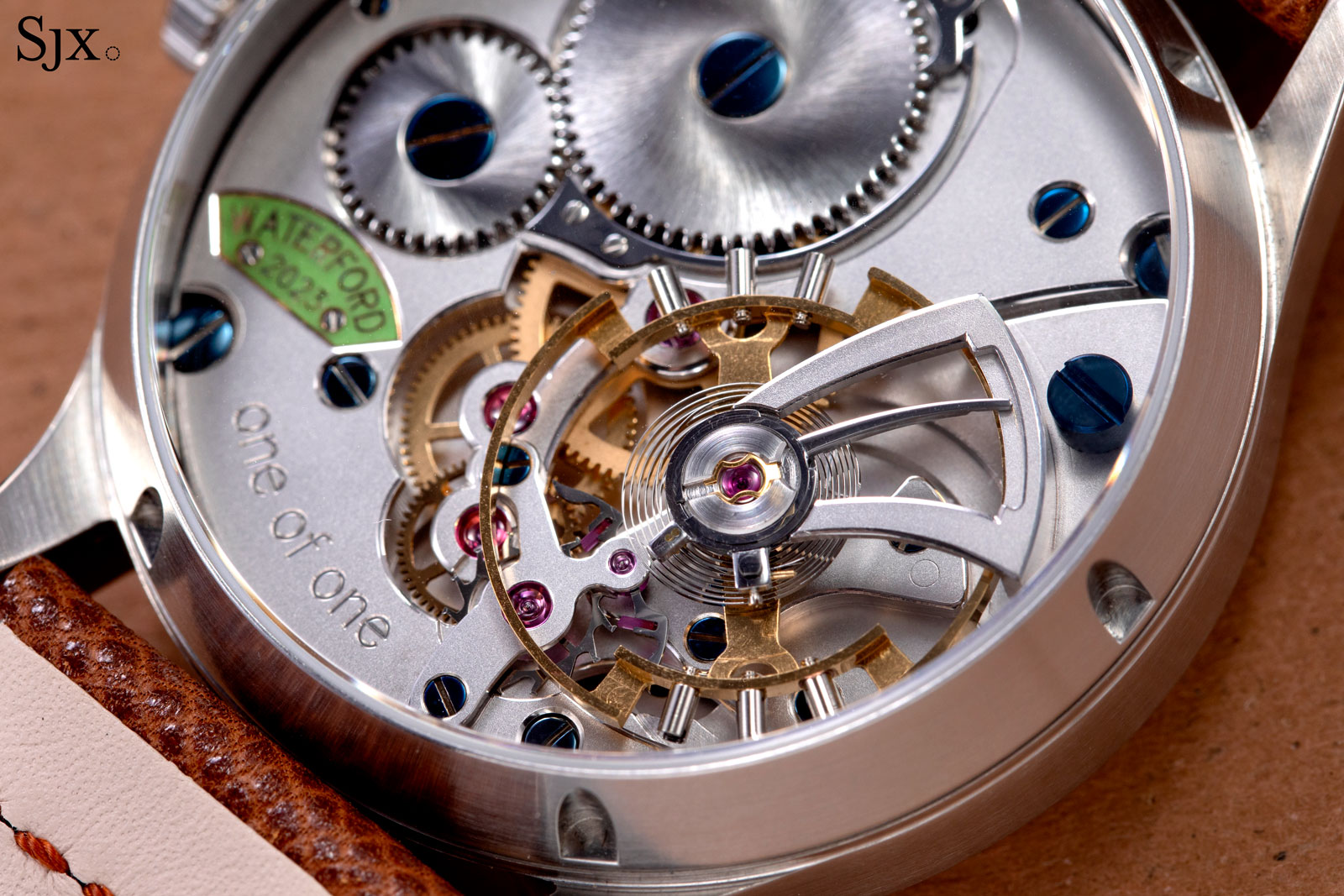
Ms Weber played an important role in the concept and realisation of the watch, including the inclusion of a Breguet overcoil. As a result, Mr Gerber included her name on the dial alongside his.
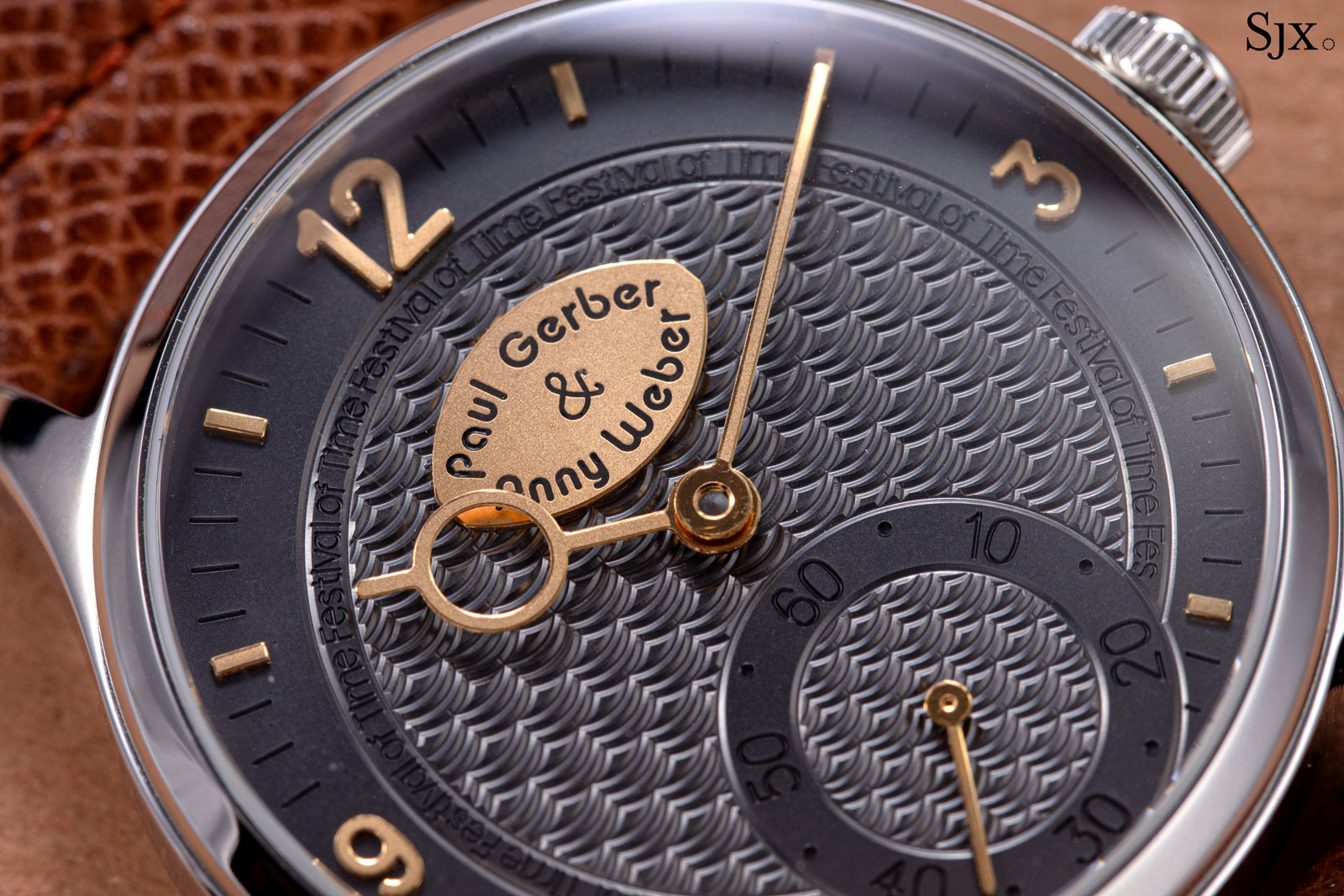
The dial is finished with a wave-pattern hand guilloche
Offered with no reserve, the Waterford has an affordable estimate of CHF10,000-20,000. A portion of the proceeds will be donated to charity, while some of the rest will go towards supporting Ms Weber’s watchmaking career.
161 – Christian Klings Tourbillon No. 6
The next watch is easier to understand in comparison to the Paul Gerber above – both use the same ETA Unitas as a base. Made by German watchmaker Christian Klings, the Tourbillon No. 6 is a classically styled wristwatch with a one-minute tourbillon at six o’clock.
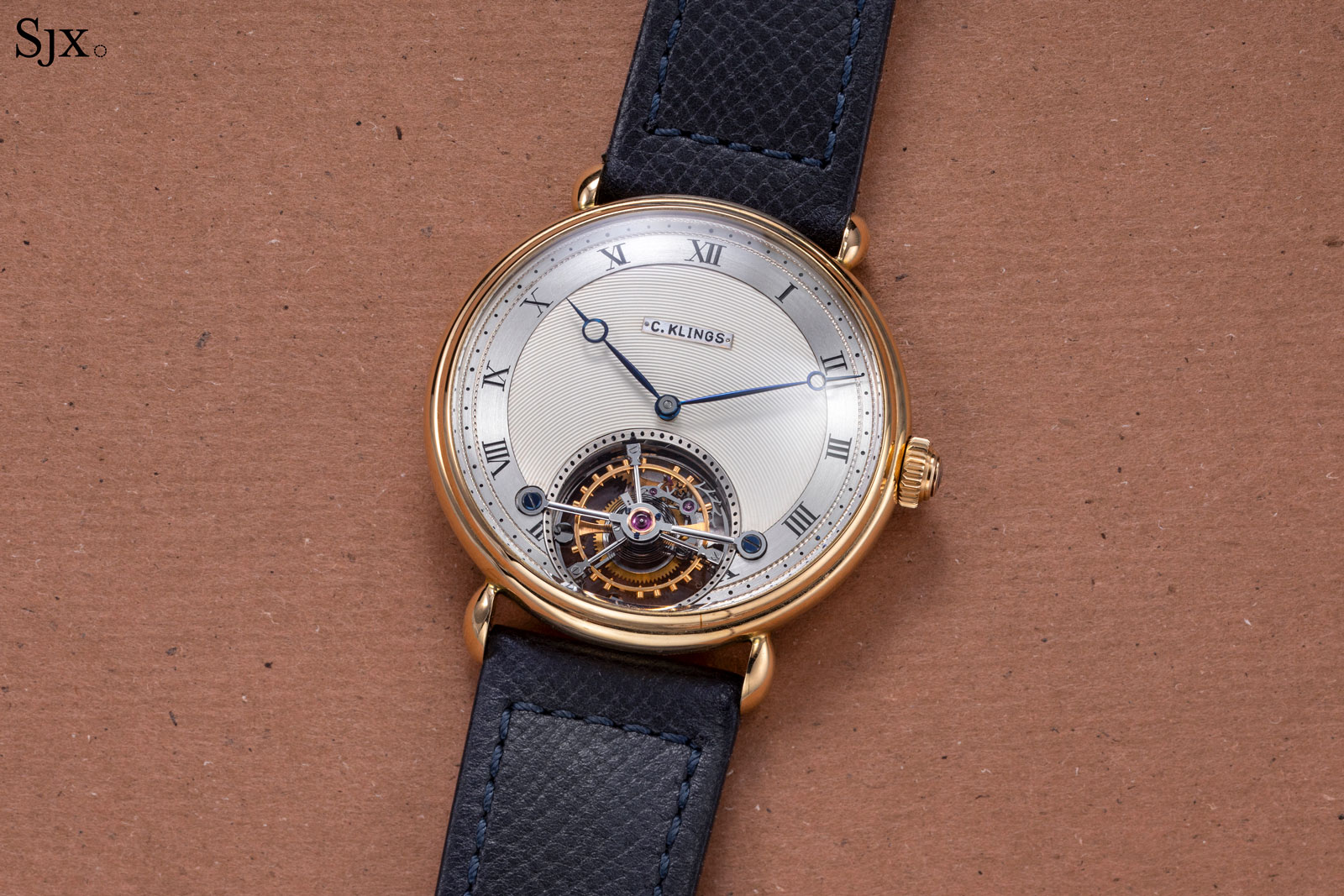
Because the Unitas base is a large movement – it was originally created for pocket watches – the Tourbillon No. 6 is a correspondingly large watch with a 42 mm diameter. For the same reason, the tourbillon can be large with an equally wide balance wheel.
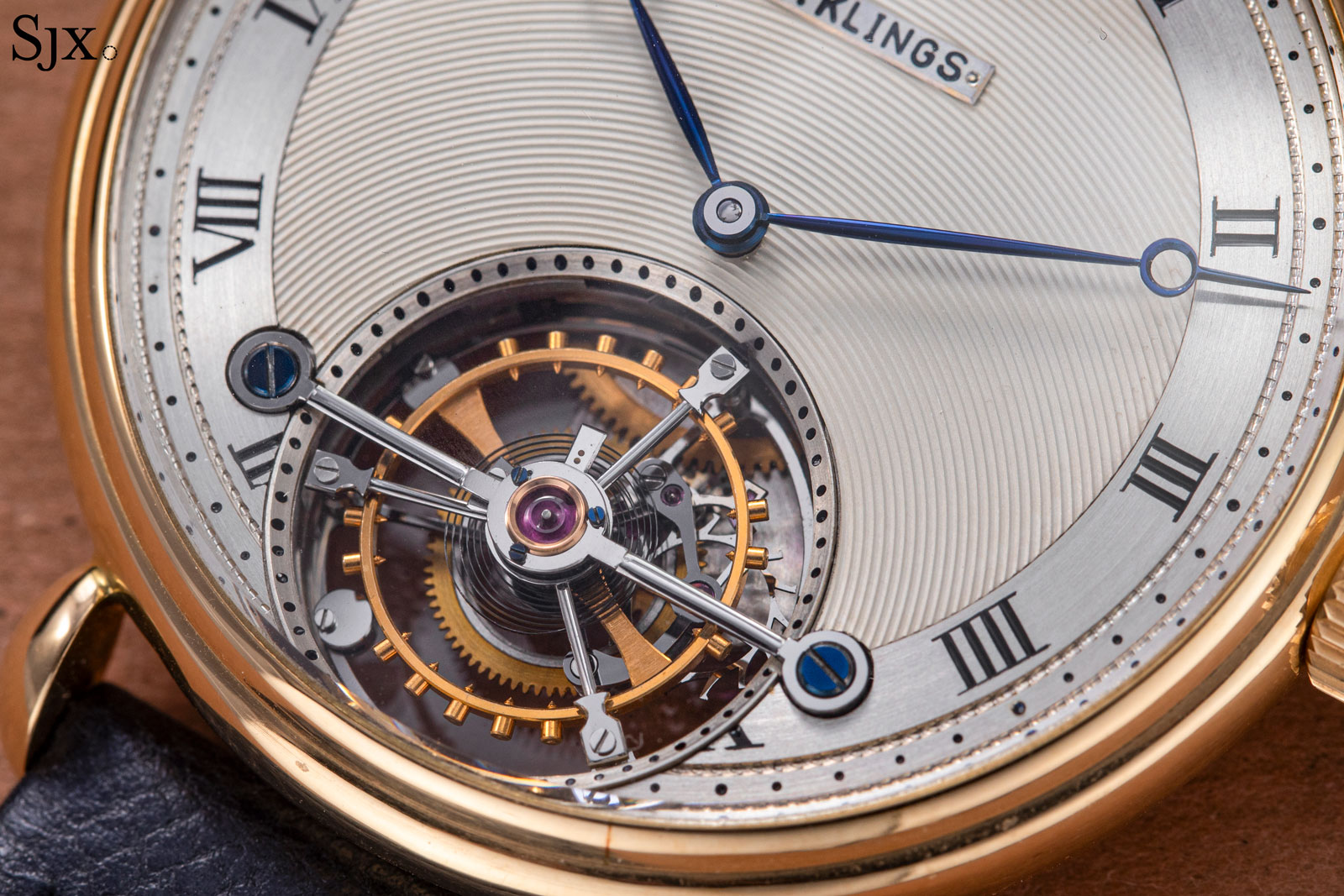
From the reverse, the Unitas base is recognisable. Mr Klings retained the familiar wheels for winding and the standard winding click (in the Waterford 2023 Mr Gerber replaced the stock winding click with a more elegant beak and spring).
Mr Klings, however, did dress up the movement with blued steel screws, a gold chaton for the centre wheel jewel, and spiral graining on the winding wheels.
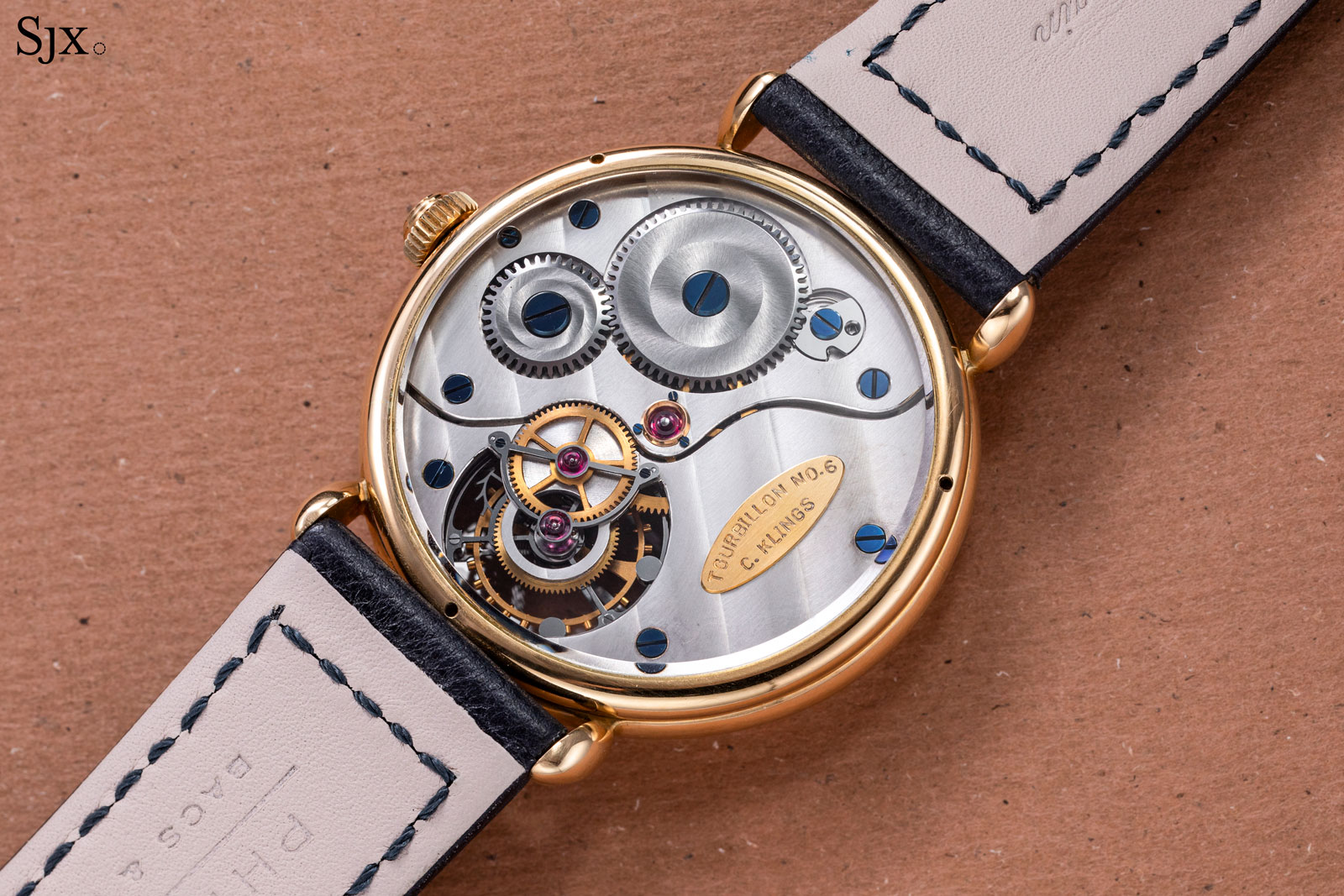
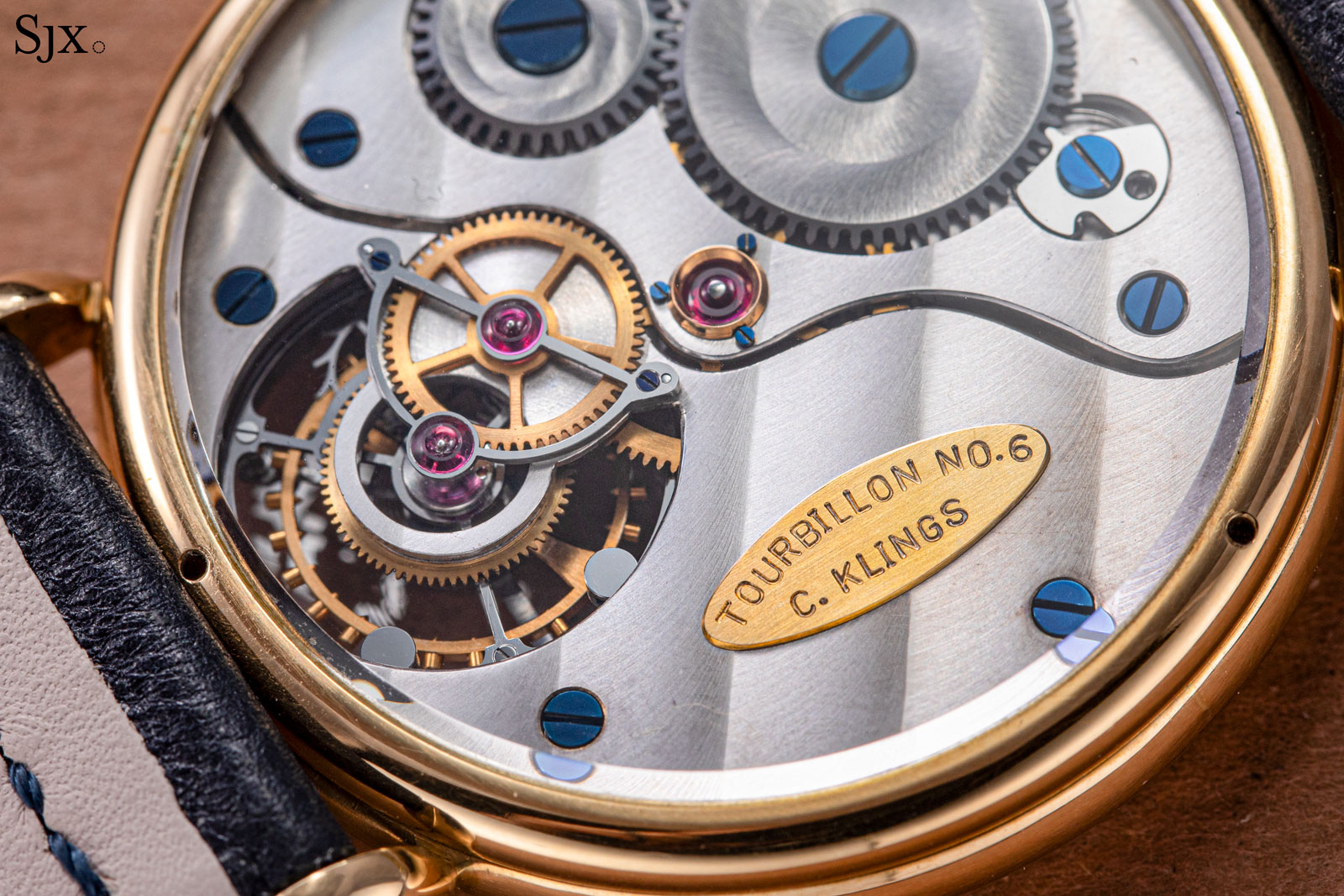
Like the Paul Gerber Waterford, the Tourbillon No. 6 looks and feels like a prototype executed mostly by hand, which is typical of Mr Klings’ work. The work on the tourbillon assembly is particularly fine and evidently hand made, though some other aspects of the movement feel more ordinary.
One of 12 tourbillon wristwatches made by Mr Klings, the Tourbillon No. 6 has an estimate of CHF80,000-160,000.
163 – Voutilainen World Timer TMZ Unique Piece
Derived from the brand’s signature Vingt-8 wristwatch, the World Timer TMZ adds a Cottier-style world time function onto the hand-wind cal. 28.
This example is one of the more interesting executions of the Voutilainen World Timer, featuring an elaborately decorated dial that depicts part of the Earth as seen from the Moon.
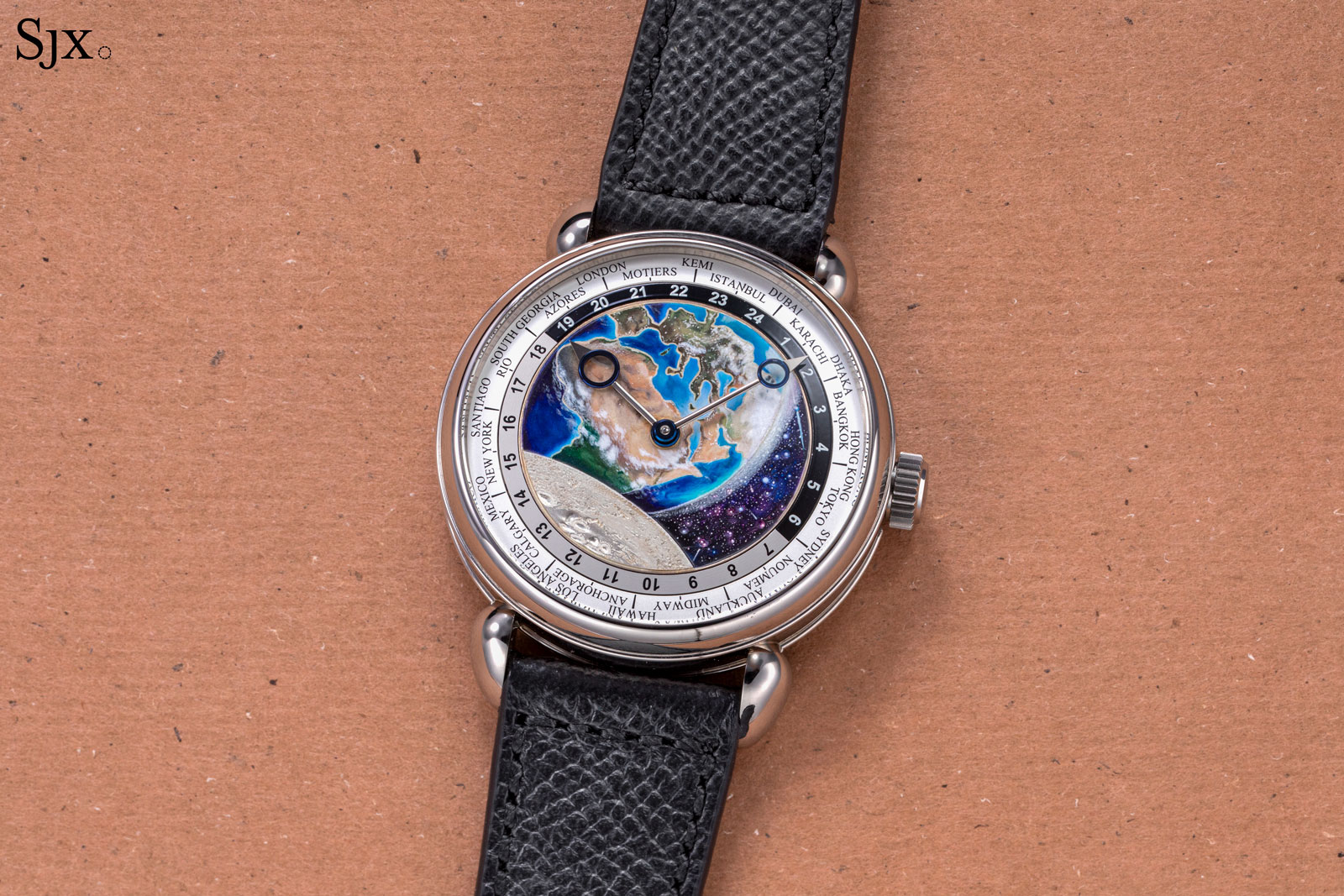
The Moon is hand engraved to reproduce the lunar surface, while the rest of the dial is done in miniature painting. Some details of the dial, however, are painted in Super-Luminova that glows in the dark, which is meant to represent the same view seen at night. The luminous details include the horizon across the Earth, the outlines of the continents, as well as the surface of the Moon.
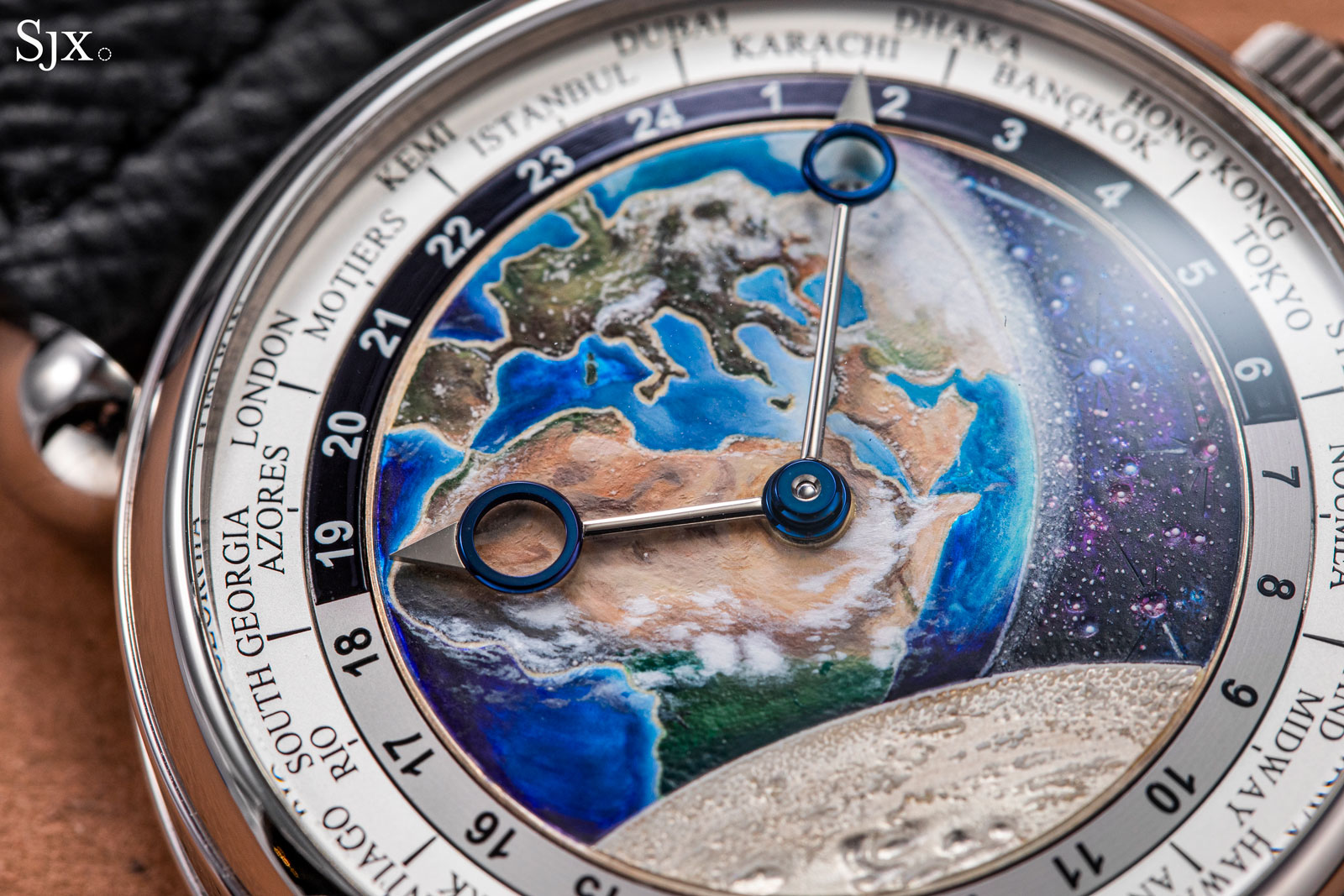
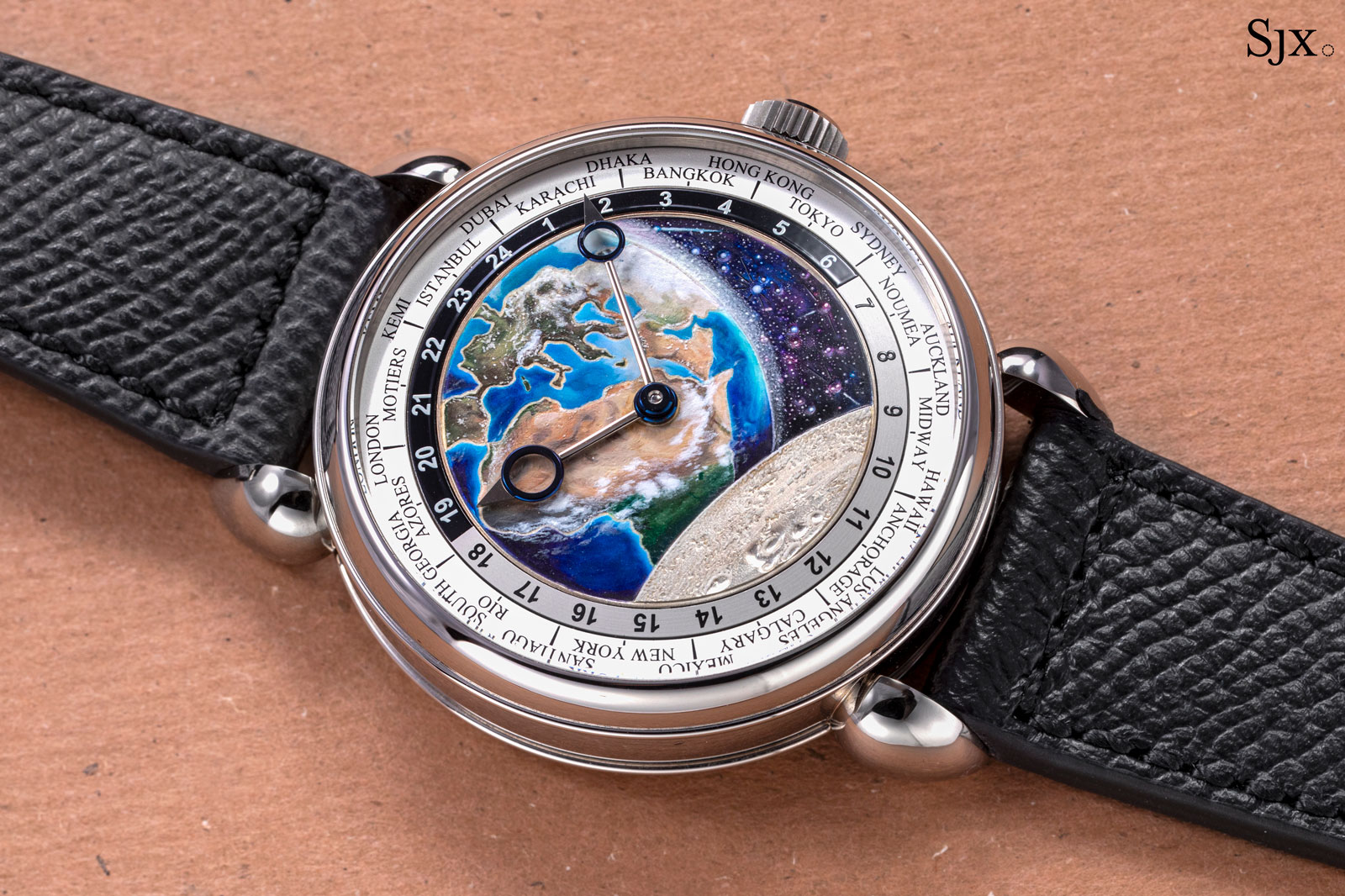
The white gold case is typical Voutilainen style with teardrop lugs and a 39 mm diameter. It’s engraved “TMZ 1/1” and “Unique Piece” on the back.
Inside is the second-generation cal. 28, here finished with striping on rhodium-plated bridges. Amongst the differences between with and the earlier generation is the balance cock, instead of the full bridge used before.
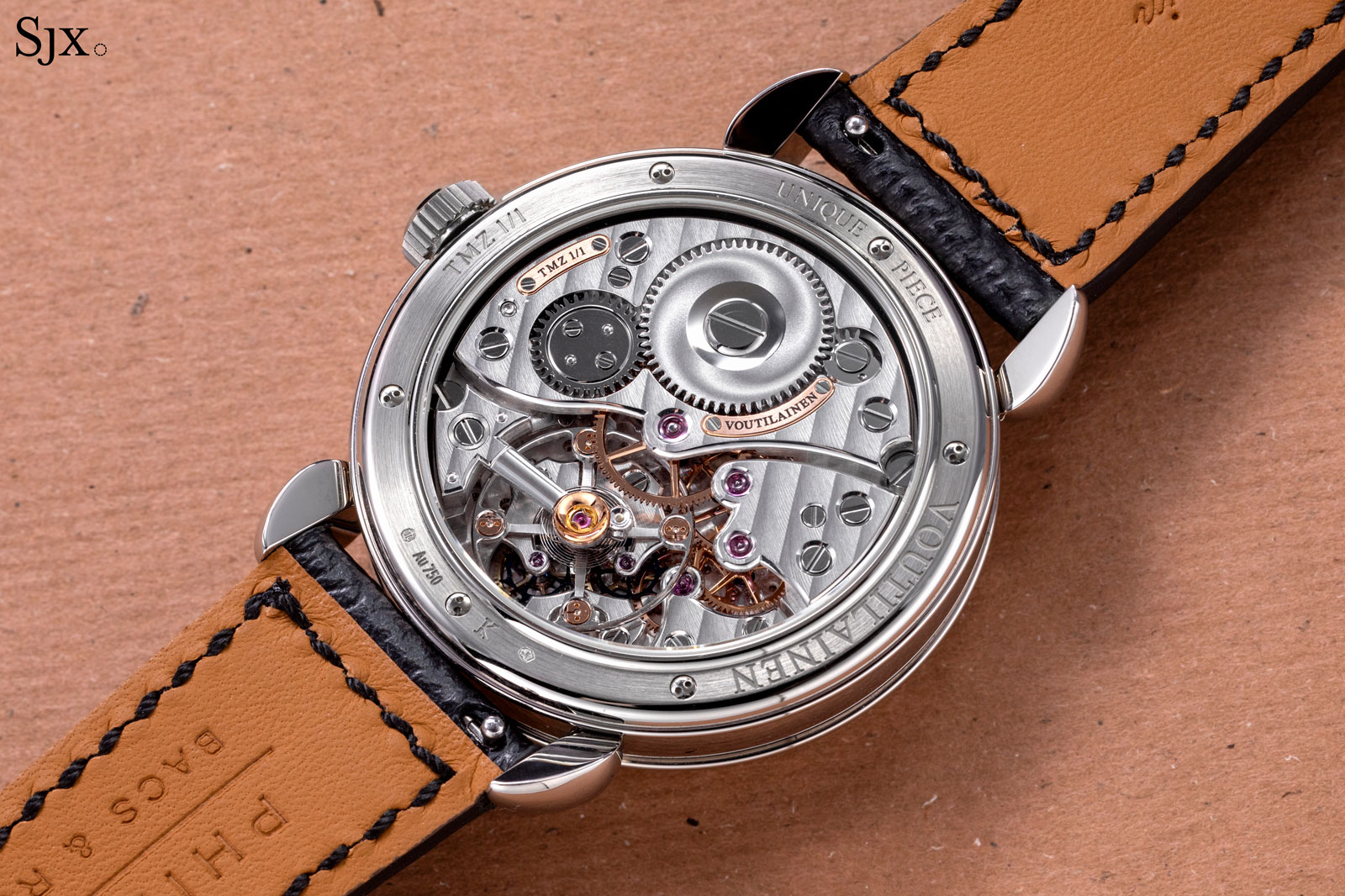
The World Timer is delivered with all of its original accessories, including the guarantee that indicates it was delivered new only in January 2023. It has an estimate of CHF80,000-160,000.
183 – Charles Frodsham Double-Impulse Chronometer
Perhaps the most interesting English-made wristwatch in contemporary matchmaking, the Charles Frodsham Double-Impulse Chronometer is exactly that – a wristwatch with a movement equipped with an independent double-wheel escapement.
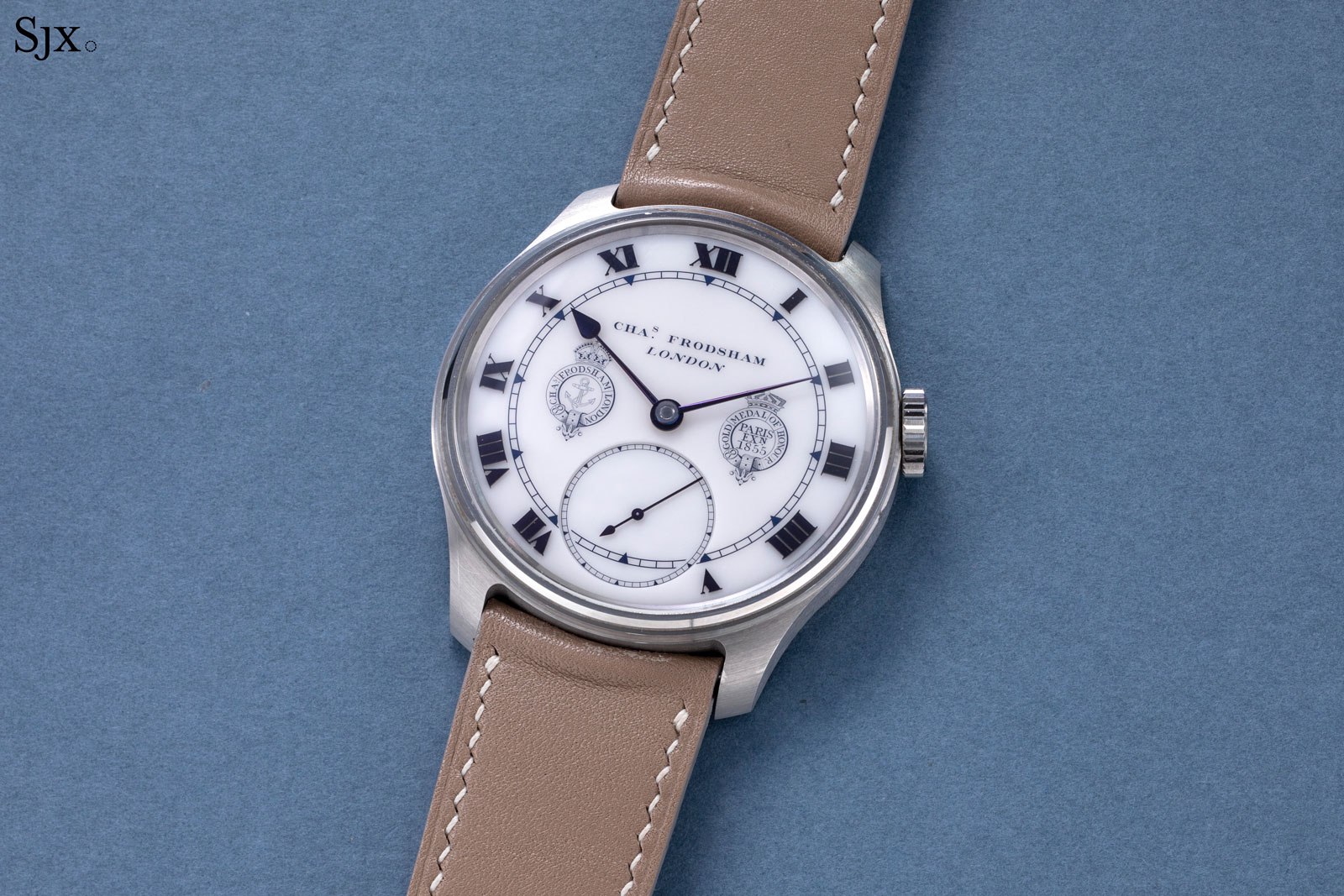
This example has a stainless steel case
Just like in the George Daniels Space Traveller’s pocket watch but miniaturised and refined for a wristwatch, the calibre features twin independent escapements, each driven by its own going train and barrel. The result is a precision movement that is challenging to assemble and adjust, and one that deserves the chronometer label.
The movement was developed entirely in-house by Charles Frodsham – a process that took 16 years – and is now produced entirely in-house at its workshop outside London. Only a dozen or so are made each year, with the waiting list for this watch almost a decade long now.
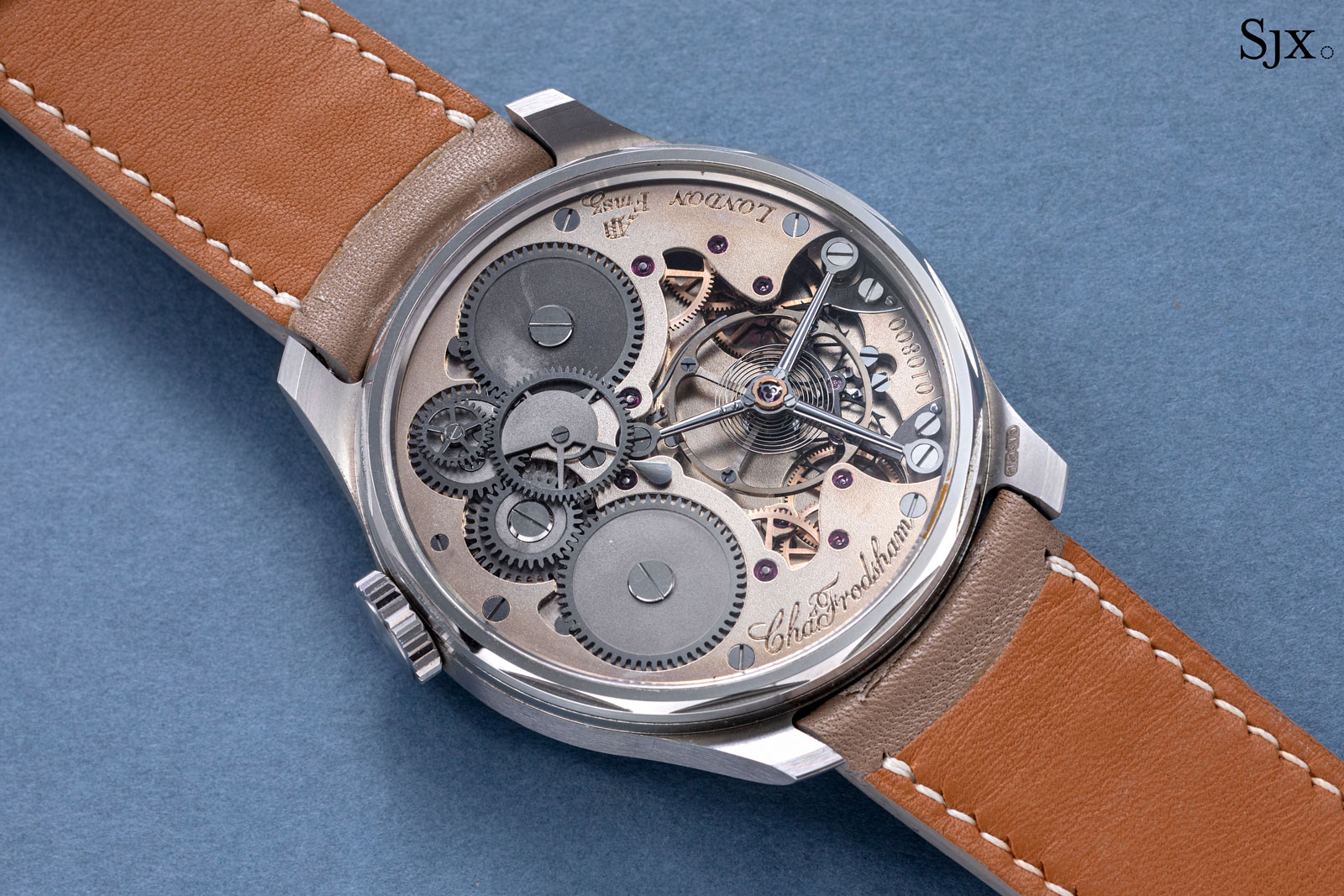
Although the movement lacks the conventional decoration expected in a high-end modern-day wristwatch, it is clearly and carefully executed. The steel components are particularly finely done, with the three-armed balance bridge being especially refined.
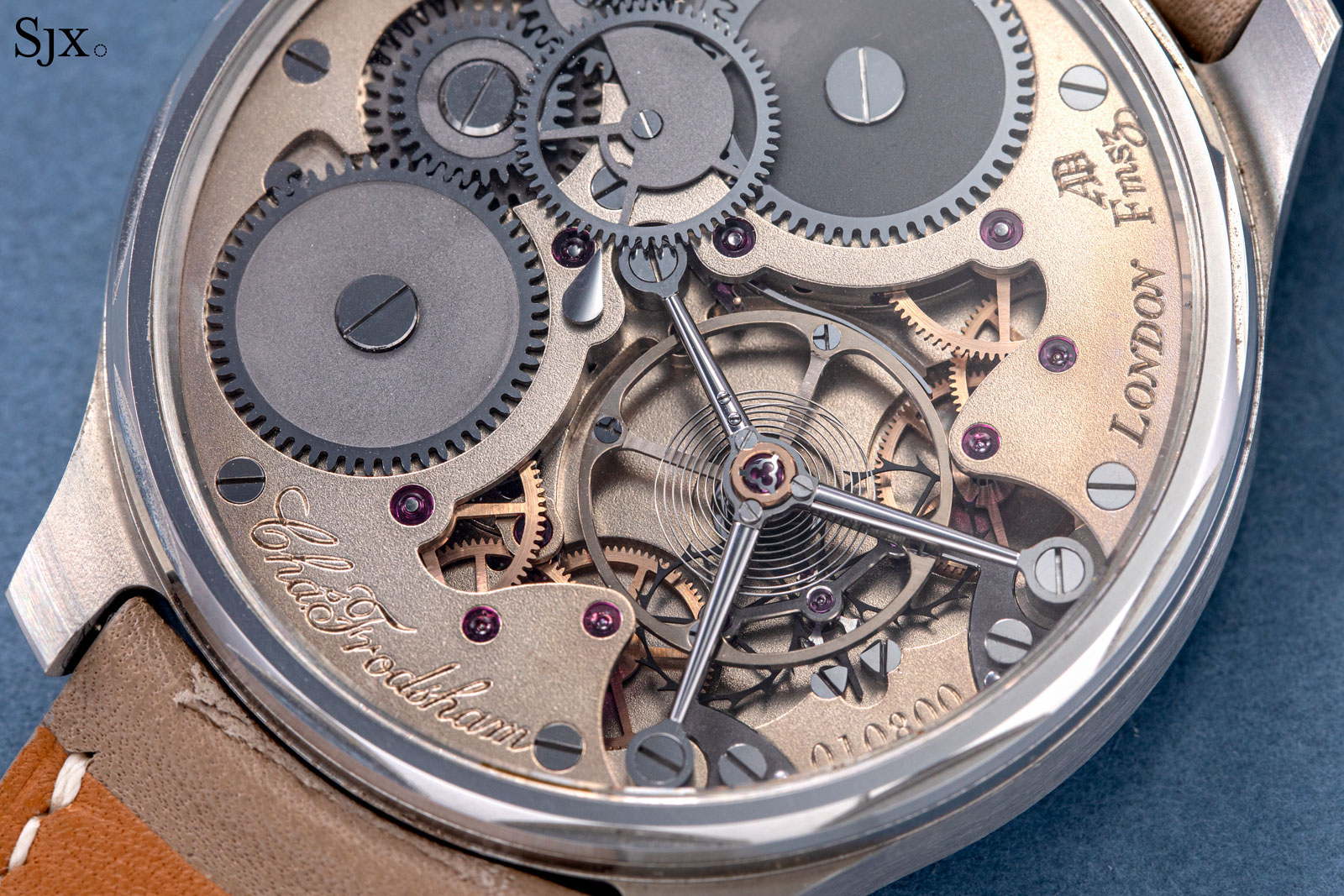
While all Double-Impulse Chronometers have the same movement, the brand offers a several dial options. This example is fitted with a white ceramic dial featuring applied Roman numerals along with a pair of a honour cyphers on the dial, a quaint detail taken from the dial of antique Frodsham wristwatches.
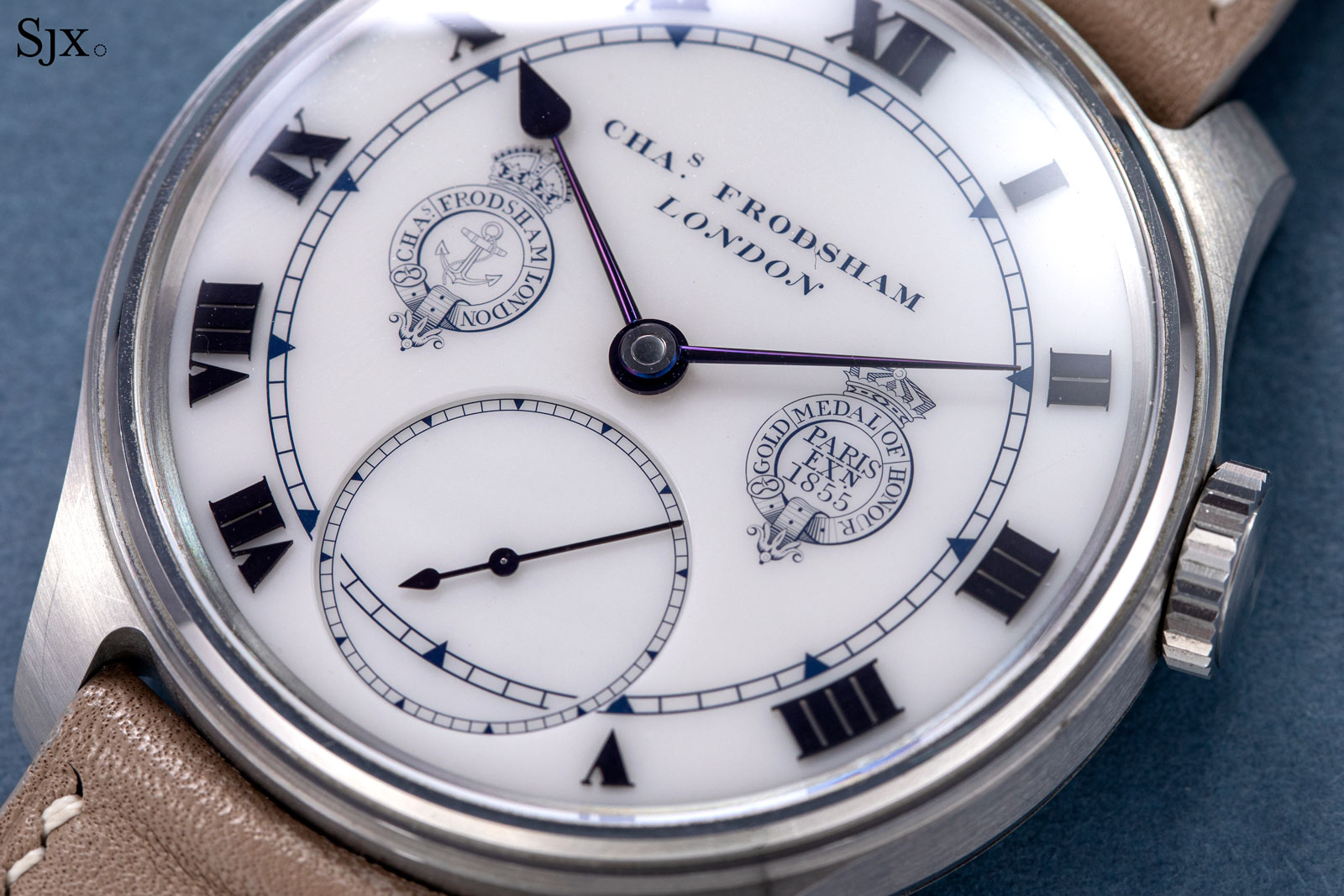
This is delivered with the original certificate and Frodsham’s correspondence with the original owner. Interestingly, this very same watch was sold at an online auction just last year for a bit over US$220,000. The estimate here is CHF100,000-200,000.
Auction information
The Geneva Watch Auction: XIX takes place on May 11 and 12 at the Hotel President in Geneva. All watches are on show at the preview exhibition from May 8-12 in the same venue.
For more, visit Phillips.com.
(The author has an interest in lots marked with *.)
Back to top.

